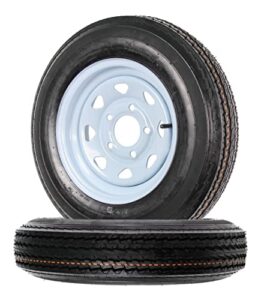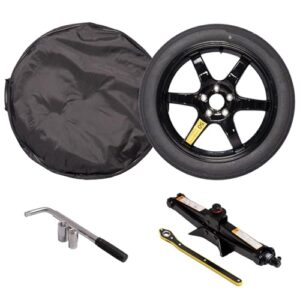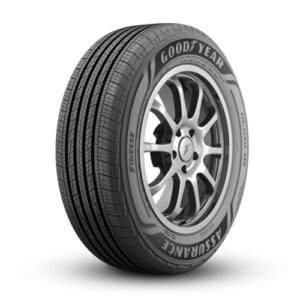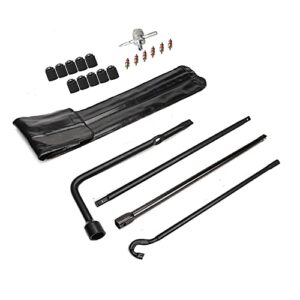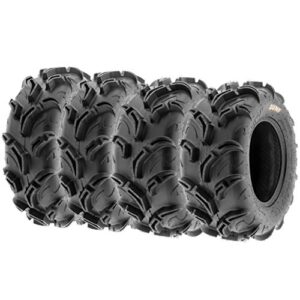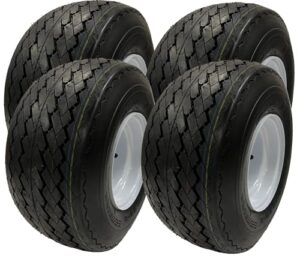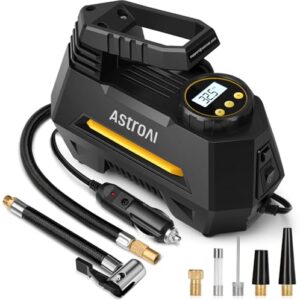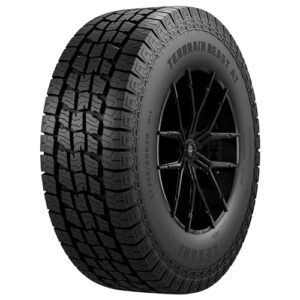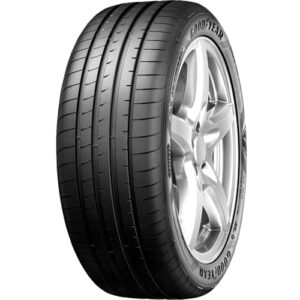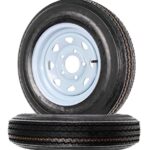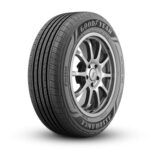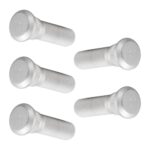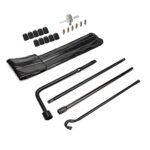To find the right tire size for rims, check the vehicle’s owner manual or the tire placard. Alternatively, look at the sidewall of your current tires for size indicators.
Choosing the correct tire size for your rims is crucial for the safety and performance of your vehicle. Tires serve as the only point of contact between your car and the road, therefore getting the dimensions right is not just a necessity, it’s a responsibility.
A mismarked tire can lead to a range of issues from improper handling to potential blowouts. This guide simplifies the process to ensure you select tires that fit your rims perfectly. We focus on uncomplicated steps that allow even the most novice of car owners to confidently determine the correct tire size for their vehicle’s rims. Remember, a proper fit contributes to optimized fuel efficiency, better road grip, and an overall smoother driving experience. Let’s delve into how you can make an informed decision on tire sizes for your rims.
Introduction To Tire Sizing
Understanding tire sizing is vital before purchasing new tires. Knowing how to find the right tire size ensures safety and optimizes vehicle performance.
Key Measurements Explained
Every tire size consists of a sequence of numbers and letters, each signifying a critical dimension. These dimensions include:
- Tire Width: The distance across the tire’s surface in millimeters.
- Aspect Ratio: The tire’s sidewall height relative to its width, expressed as a percentage.
- Wheel Diameter: The size of the rim that the tire will fit, measured in inches.
Consider the code 205/55R16, where ‘205’ is the width, ’55’ is the aspect ratio, and ’16’ is the wheel diameter.
| Section | Meaning |
|---|---|
| 205 | Tire width in mm |
| 55 | Sidewall height (% of width) |
| 16 | Rim diameter in inches |
Significance Of Correct Tire-rim Fit
Securing the right tire-rim fit is essential. Proper fit affects:
- Vehicle Safety: Ill-fitting tires can lead to tire failure.
- Performance: Correct size ensures the best grip and handling.
- Fuel Efficiency: Well-sized tires can improve fuel economy.
Use the vehicle’s manufacturer guidelines or tire size calculators for precise measurements. Always choose tires that match the rim’s diameter. For example, a ’16’ inch tire fits on a ’16’ inch rim. Consult professionals if unsure.

Deciphering Tire Size Codes
Ever peeked at your tire’s side and seen a code that looked like a secret message? Let’s solve that mystery! Unlocking the meaning behind these numbers ensures your rims get the perfect tire match. Ready to be a tire code detective?
Understanding The Numbers
Tires have a special code that tells you their size. The code looks like this: P225/50R17 98W. Sounds complicated? It’s not! Let’s break it down:
- P – This means the tire is for passenger vehicles.
- 225 – This number measures the tire’s width in millimeters from side to side.
- 50 – This is the aspect ratio. It’s the height of the tire’s sidewall compared to its width. Here it’s 50% of 225mm.
- R – This letter stands for radial. Most tires today are radial.
- 17 – This number tells us the diameter of the wheel in inches. In this case, it fits a 17-inch rim.
Load Index And Speed Rating
After the main size, there’s more info about how much weight the tire can carry and how fast it can go safely.
| Load Index | Speed Rating |
|---|---|
|
98 – This is the load index. It shows the maximum weight that one tire can handle. |
W – This is the speed rating. This letter tells us the top speed the tire can safely reach. |
To find your tire’s weight and speed limits, match these numbers and letters to a chart. Always pick a tire that can support your car’s needs!
Matching Tires To Rim Size
Fitting the correct tire to a rim ensures safety and optimal performance. Tires and rims work together to support the vehicle’s weight, absorb road shocks, and create a comfortable ride. The right combination is critical for handling and fuel efficiency. Learn to match them like a pro!
Width Compatibility
Width is the first step in matching tires and rims. Each rim has a range that determines which tire widths fit. To find this:
- Look at your current tire’s sidewall.
- Check the section width (in mm).
- Find a tire made for that width.
A rim’s width is key. A tire too wide or narrow for a rim causes problems. Stick to the recommended range for a safe, smooth ride.
Diameter Concerns
The rim’s diameter is vital. Here’s how to ensure a proper fit:
- Check the rim’s diameter (in inches).
- Choose a tire with the same diameter.
Never mix diameters. The tire won’t fit if the diameters mismatch. A correct match keeps you safe and avoids damage.
| Rim Diameter | Compatible Tire Size |
|---|---|
| 16 inches | 205/55R16 |
| 17 inches | 225/50R17 |
| 18 inches | 245/45R18 |
Check the table for common matches. Remember to consult your vehicle’s manual or a professional for precise information.
Special Considerations
Finding the right tire size for your rims is crucial. You need to factor in special considerations. These can greatly influence your vehicle’s compatibility and performance. Let’s explore the pivotal things you should keep in mind.
Vehicle Specific Requirements
Each vehicle has unique needs in terms of tire size and specifications. This matching ensures optimal performance and avoids safety risks.
Start by checking your owner’s manual. It has the manufacturer’s recommended tire size. Your vehicle’s placard also shows this vital information. It’s usually found inside the door jamb or glove box.
- Width, aspect ratio, and diameter must match your vehicle’s design.
- Load rating and speed rating are key for safety.
Don’t guess – getting the numbers right is a must. Correct tire size ensures that speedometer, odometer, and other systems work right.
Impact On Performance And Safety
Choosing the incorrect tire size can lead to performance issues and put your safety at risk.
Handling and cornering can become unpredictable with wrong-sized tires. Inappropriate tires might fail in supporting your vehicle’s weight. This can increase the risk of tire blowouts.
- Wrong size can affect fuel efficiency.
- It can also impact braking distance and traction control.
For optimal performance and safety, always go with the manufacturer-recommended tire size.
| Aspect | Right Size | Wrong Size |
|---|---|---|
| Handling | Stable and Predictable | Erratic and Unsafe |
| Efficiency | Optimized | Reduced |
| Safety | Maximized | Compromised |
Tools And Resources
Finding the right tire size for rims involves accuracy and precision.
Use powerful tools and resources to make the perfect choice.
Here, we explore easy-to-use options to match tires and rims seamlessly.
Online Tire Size Calculators
Web tools simplify tire size matching.
Online tire size calculators offer instant results.
Enter wheel diameter, width and offset.
Calculators will suggest compatible tires.
- Input rim specs for curated options.
- Detailed tire size charts aid selection.
- Visual guides help understand fitment.
Expert Consultation
Talk to professionals for tailored advice.
Auto shops provide personalized recommendations.
They consider driving habits and vehicle specs.
Mechanics ensure optimal tire-rim compatibility.
Expert insights negate guesswork, enabling informed decisions.

Step-by-step Guide
Finding the right tire size for your rims is like picking the perfect shoes for your feet. It must be precise to ensure safety and performance. This step-by-step guide will help you make the right choice without getting overwhelmed.
Assessing Existing Setup
Start by looking at your current tires. The size is on the sidewall. Use this as your baseline. Information here is in code, like a secret language.
Example: P215/65R15
- P means for passenger vehicles.
- 215 is the width in millimeters.
- 65 is the aspect ratio.
- R signifies radial construction.
- 15 is the rim diameter in inches.
Grab a measuring tape. Measure the rim diameter and width. Double-check these with what’s on the tire. Record these numbers. They’re your tires’ footprint and skeleton.
Selecting The Right Tire
It’s time to choose your tires. Keep in mind, the perfect fit offers comfort and safety for your drives. A tire’s size must match the rim. Here’s how to ensure they fit:
- Check the owner’s manual or the sticker on the driver’s side door. It has the recommended tire size.
- Use an online tire size calculator. Input your rim size. It shows you suitable tire options.
- Consult a professional. They’re like shoe fitters for your car. Talk to them if you’re unsure.
Remember, not all tires are equal. Prioritize quality. A good tire carries you smoothly for miles. It’s worth the investment.
| Rim Diameter (Inches) | Tire Width Range (Millimeters) |
|---|---|
| 15 | 185 – 215 |
| 16 | 195 – 225 |
| 17 | 205 – 235 |
| 18 | 215 – 245 |
Note the table above for a general range. Each rim size pairs with a width range. This ensures your tire seats well on the rim and rides true.

Frequently Asked Questions
How Do I Know What Size Tire Will Fit My Rims?
To determine the right tire size for your rims, check the sidewall of your current tire for a series of numbers and letters, such as 225/50R16, which indicate the size. Always refer to your vehicle’s owner’s manual or confirm with a tire professional to ensure compatibility.
How Do I Choose A Tire Size?
To choose a tire size, check your vehicle’s owner’s manual or the sidewall of your current tires. Compare load capacity and speed rating. Ensure compatibility with your car’s make and model. Opt for the size that matches your driving conditions and performance needs.
Can I Put 17 Rims Instead Of 19?
Yes, you can switch to 17-inch rims from 19-inch, but verify compatibility with your vehicle’s specifications, including clearance, bolt pattern, and tire size, to ensure proper fit and function.
What Size Rim For A 225 Tire?
A 225 tire typically fits a rim width between 6 and 8 inches for proper mounting and performance. Choose a rim within this range to ensure compatibility.
Conclusion
Selecting the perfect tire size for your rims is essential. It ensures a smooth ride and optimal vehicle performance. Remember to check your manual, understand sizing codes, and consider driving conditions. Proper tire fitment is crucial for safety and handling.
Drive confidently, knowing you’ve made the best choice for your rims.




